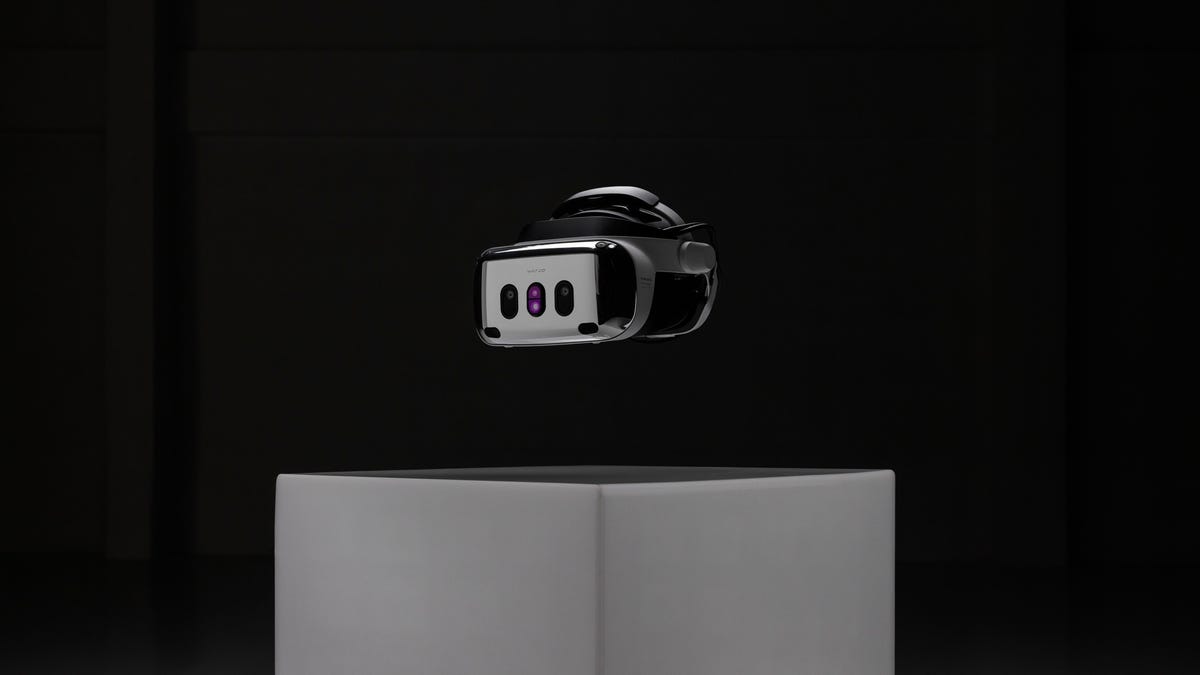Varjo's Auto-Focus XR-4 Mixed-Reality Headset Boasts Specs to Rival Apple Vision Pro
The Finnish startup's latest hardware pushes the boundary on how external cameras might mix reality, but in a PC-tethered design.

Varjo's newest industrial VR/AR headset promises display and passthrough camera quality so high you won't be able to tell the difference between them.
Apple's upcoming Vision Pro headset pushes the boundaries on headset resolution and camera quality for AR and VR, but some headsets are already looking beyond Apple's headset. Varjo, a Finnish tech startup, has a new industrial mixed-reality headset for PCs that promises even higher headset resolution, and a multifocal passthrough camera that Varjo claims makes mixed reality and actual reality feel indistinguishable. But before you get too excited, the Varjo XR-4, available in December, is for industrial use.
I haven't tried the Varjo XR-4 yet, but based on my previous experiences with Varjo headsets, I have little reason to doubt the claims. Earlier headsets have been jaw-dropping and demonstrated many of the "retina level" display quality and high-end passthrough camera-based mixed reality features Apple is now shooting for with Vision Pro. Varjo's hardware is also a component of OpenBCI's sensor-studded Galea headset.
Varjo's new headset isn't standalone and requires tethering to a powerful PC to make its software work. However, the newest Varjo XR-4 makes that process easier than before. The new headset finally has its own packed-in controllers co-developed by Razer, and the lidar-equipped headset's outer cameras can now do all full motion 6DoF (six degrees of freedom) tracking without needing any external Steam VR base stations like the previous versions.
The headset has its own controllers this time, and tracks motion in the headset with its cameras, but still needs a PC for tethering.
The XR-4's specs sound wild. The field of view is bigger than before, adding a lot more vertical field of view than is normally standard: 120 degrees horizontal, and 105 degrees vertical. The pixel resolution is about 4K per eye (3,840x3,744 pixels per eye), with a density of 51 pixels per degree. (For reference, the human eye sees 60 pixels per degree in the fovea.) Varjo is using a single display panel per eye, instead of multiple panels used in previous headsets. The displays use Mini-LED, with 200 nits of maximum brightness.
Varjo's lidar sensors, which handle depth sensing similar to how Apple's AR tech works, are ramped up to a promised 8x resolution, which could mean better scanning of objects or hands into VR, and layering mixed reality into captures of the real world with more accuracy. The cameras are also improved, using dual 20-megapixel image sensors.
A more expensive Focal Edition adds a completely new idea – autofocus controlled by the headset's built-in eye tracking to focus on things in the real world and layer virtual objects on top of them in a way that could feel even more like everyday focus-based vision. This isn't varifocal VR like companies such as Meta have been exploring, but it could lead to a varifocal-like mixed reality feeling.
Varjo's hardware and software are used for training and design, in situations like designing cars with Volvo – one of Varjo's clients – or creating flight simulators with the US Department of Defense. This powerful, pro hardware is expensive, too: $3,990 for the regular XR-4, and $9,990 for the auto-focus Focal Edition -- and that doesn't even include the PC needed to run it. It makes the Apple Vision Pro seem affordable by comparison. But Varjo's technology looks to be a counterpoint to a new landscape of ultrahigh-end mixed-reality headsets that could define what future, more affordable consumer devices will be capable of. I'll get to try one out soon and report on how it feels versus the Vision Pro.

